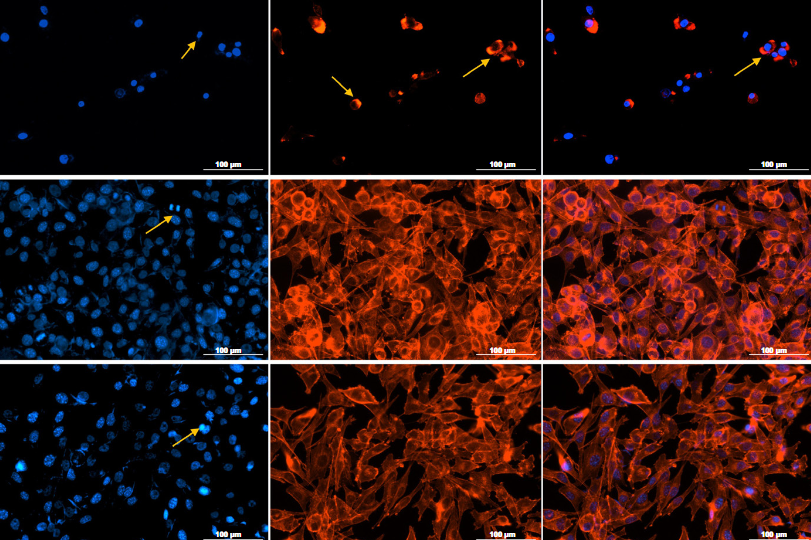Comprehensive in vitro and in ovo assessment of cytotoxicity: Unraveling the impact of sodium fluoride, xylitol, and their synergistic associations in dental products
DOI:
https://doi.org/10.17305/bb.2024.10181Keywords:
Natrium fluoride (NaF), xylitol (Xyl), safety considerations, caspase activity, pro-apoptotic gene expression, hen’s egg test—chorioallantoic membrane (HET-CAM) assayAbstract
Over the past several decades, dental health products containing fluoride have been widely employed to mitigate tooth decay and promote oral hygiene. However, concerns regarding the potential toxicological repercussions of fluoride exposure have incited continuous scientific inquiry. The current study investigated the cytotoxicity of sodium fluoride (NaF) and xylitol (Xyl), both individually and in combination, utilizing human keratinocyte (HaCaT) and osteosarcoma (SAOS-2) cell lines. In HaCaT cells, NaF decreased proliferation in a concentration-dependent manner and induced apoptosis-related morphological changes at low concentrations, whereas Xyl exhibited dose-dependent cytotoxic effects. The combination of NaF and Xyl reduced cell viability, particularly at higher concentrations, accompanied by apoptosis-like morphological alterations. Sub-cytotoxic NaF concentrations (0.2%) significantly affected caspase activity and the expression of pro-apoptotic genes. Conversely, Xyl demonstrated no discernible effect on these biological parameters. In SAOS-2 cells, NaF increased proliferation at high concentrations, contrasting with Xyl's concentration-dependent cytotoxic effects. The combination of NaF and Xyl had a minimal impact on cell viability. Sub-cytotoxic NaF concentrations did not influence caspase activity or gene expression, while Xyl induced dose-dependent morphological alterations, increased caspase activity, and upregulated pro-apoptotic gene expression. In ovo experiments on the chorioallantoic membrane (CAM) revealed that only NaF induced irritant effects, suggesting potential vascular adverse outcomes. This study advocates for the combined use of NaF and Xyl, highlighting their cytotoxicity benefits in healthy cells while maintaining safety considerations for tumor cells.
Citations
Downloads

Downloads
Published
Data Availability Statement
The data presented in this study are available upon reasonable request from the corresponding author.
Issue
Section
Categories
License
Copyright (c) 2024 Daniel Breban-Schwarzkopf, Raul Chioibas, Ioana Macasoi, Sorin Bolintineanu, Iasmina Marcovici, George Draghici, Stefania Dinu, Roxana Buzatu, Cristina Dehelean, Camelia Szuhanek

This work is licensed under a Creative Commons Attribution 4.0 International License.
How to Cite
Accepted 2024-02-15
Published 2024-03-02









